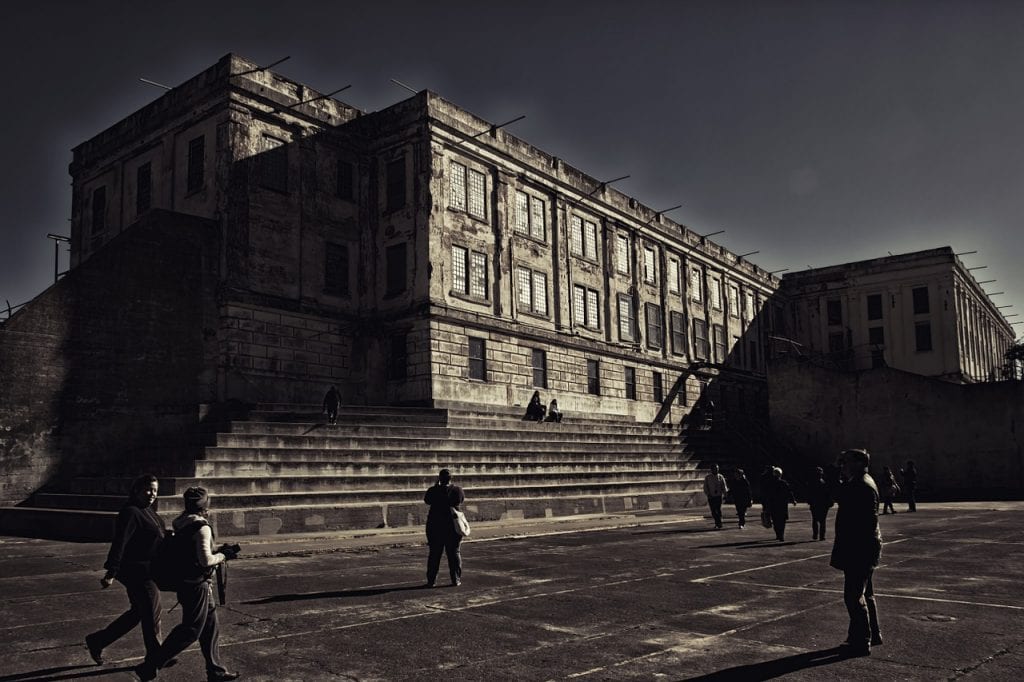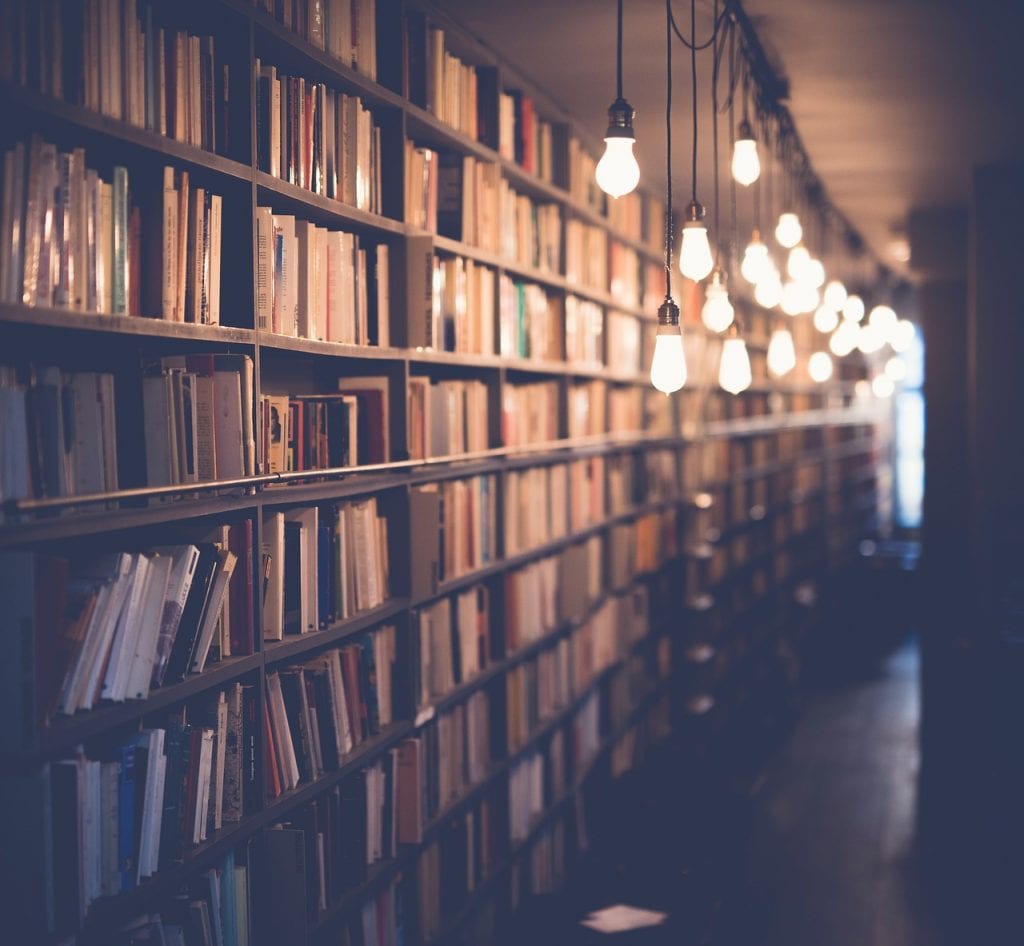
The world’s economy has evolved with the transfer from production lines to one structured upon the creation and dissemination of information. This era has been revolutionised by the ubiquitous presence of the internet and the speed in which it is generated. Combined with rapidly evolving technology; access, use and production of information is easier. The education sector has been particularly affected by this insurgence of documentation and the skill sets required to seek, harness and use information successfully. This essay will define digital literacy and its pivotal role in information seeking behaviour trend of adolescents, its impact on educational practices and the role of the teacher librarian in this knowledge society.
Literacy has evolved from simply being able to read and write in text form into something more dynamic. ACARA (2016a) has expanded the definition to include; the ability to interact with, engage and use language across modalities for a variety of purposes and a diversity of contexts. In this knowledge rich society, information is available in multiple formats and can be often simultaneously engaged with (Jacobson et al., 2018). Therefore, digital literacy (DL) is the ability to appreciate the need for; the expertise to access; the capacity to evaluate, use and integrate information within the school environment and in general society (Lofton, 2016). Thomas et al. (2018) acknowledge, even though access is widespread, individuals are grappling with the ability to use the new technologies in all areas of life (p.12).
The modern student is heavily reliant upon the internet for both information seeking and retrieval due to the widespread availability of mobile devices (McGrew et al., 2018, Mussell & Croft, 2013, Lanning & Mallek, 2017 and Mills & Angnakoon, 2015). Teachers are often frustrated at student’s poor information seeking behaviour (ISB) and vexed by their blind dedication to Google and Wikipedia, despite a lifetime exposure to technology (Saunders et al., 2017). The exasperation tends to peak at the student’s inability to successfully identify relevant and reliable resources online. Unlike a library, where the librarian acts like a gatekeeper, the internet and thus everything on there, including unsubstantiated and vitriolic materials, are freely accessible. Search engines are the most common starting point as students are familiar with their visual design, their mechanism and are viewed as fast and reliable (Lanning & Mallek, 2017; Qayyum & Smith, 2018 and Mussell & Croft, 2013). Adolescents often base their entire study upon the virtue of Wikipedia and Google (Ricautre, 2016 and Qayyum & Smith 2018). Wikipedia, as Ricautre (2016) elaborates, is built upon the concept of crowd-sourcing, as the public is encouraged to contribute information. Whilst understandably these parameters allow for open dialogue and the precept of an open learning environment, it brings validity and accuracy of information presented into disrepute.
Google is an omnipresent search engine in modern society. Its pervasive presence has led to ‘google it’ often replacing ‘search for it’ in modern jargon. Regrettably, as McGrew et al., (2018) point out, students determine the usefulness of a website based upon superficial points, such as the hierarchy of results displayed by Google. Students fail to comprehend that Google, a corporation, controls results based upon an algorithm determined by the user’s own personal digital history (Ricautre, 2016). In this way, Google ensures that the search results match closely to the user’s state of mind, previous search parameters and thus is more likely to be accepted (Ricautre 2016). Some students do not even open up the individual sources but rather just peruse the content on the main search page and accept the information as correct without understanding context (Russell & Callegaro, 2019). Other students rarely venture away from the initial website due to insufficient DL skills, so they accept information without verifying authenticity and or bias (McGrew et al., 2018). This creates a moral dilemma as they are willingly restricting access to information simply because it is easier.
The problems with students’ ISB are numerous. Firstly, their techniques used to seek information are based most often on predetermined algorithms, ineffective search terms and minimum effort expended. In order to cope with the overload of information available, students covertly reduce their search techniques so as to minimize the amount they are presented with (Qayyum & Smith, 2018). Russell & Callegaro, (2019) point out correctly, that students place the whole query into the search bar and expect a complete response instantly, as there is an unwillingness to construct a bank of knowledge (Mussell & Croft 2013). Qayyum & Smith (2018) corroborate, by suggesting that the speed in which the internet produces results prevents reflection of content. The DL skills of skimming and scanning cannot keep up with the flow of information and sources are rejected if not exactly correct.
Kobayashi (2018) found that whilst students preferred engaging with technology, they are unwilling to use advanced software and hardware, as they are unable to troubleshoot. This self-censorship is due to an inability to interpret multimodal sources with a rich media presence (Head et al., 2018, p.4, Jacobson et al 2018; Kobayashi, 2018). This is especially true for students, who already have low literacy, as they often get overwhelmed by embedded multimedia, slowing comprehension (Kobayashi, 2018). Other students find the layering of sources distracting which also slows cognition down. The majority of adolescents are unable to use search terms properly and when faced with an overwhelming number of sources, they simply use the first few and disregard the rest, despite the possibility of their importance (Mussell & Croft, 2013). Their ability to navigate the internet is hampered by a lack of literacy and critical thinking skills.
Once students have managed to find sources they understand, they are unable to determine veracity. McGrew et al., (2018), in their study, concluded that the pattern in which students investigate the reliability of a website is mainly determined by the visual appeal and seemingly professional appearance, whilst often disregarding the bias and or dubious authorship. Jacobson et al (2018) argued that students are receptive to emotive language and the presence of speculative data was used as evidence of reliability (McGrew et al 2018). Students will also accept the reliability of sources if they subconsciously agree with the information and disregard sources that they disagree with, due to the challenges this new data imposes upon them (Jacobson et al 2018 and Russell & Callegaro 2019). Even when presented with alternate sources, like databases, many preferred search engines due to the visual appeal and navigation ease (Lanning & Mallek, 2017, and Mussell & Croft, 2013). Shenton (2018) attributes this literacy to, in that students with lower literacy are often unable to decode more complex text and use familiarity of structure to determine reliability and rationality. In terms of DL, this ISB highlights a lack of critical thinking skills, as accessibility is preferred over validity, which is a significant issue for education and beyond.
The presence of the internet has forever changed how public policy and societal issues are addressed, and it is imperative that students are proficient at ISB so that they can do the same hereafter (McGrew et al., 2018 and Thomas et al., 2018). DL is a citizenship issue and true democratic societies require the voter to be able to find reliable information, evaluate multiple perspectives and communicate their ideas on current issues (McGrew et al., 2018; Jacobson et al., 2018). If students are incapable of DL at school when investigating tasks simple and direct, then their ability to navigate for information on more controversial topics is hampered (McGrew et al., 2018). This is particularly evident in an election year when society is bombarded multi-modally in an effort to persuade the voter. If one is unable to filter, understand and evaluate the information effectively, then the scope of information is greatly narrowed. One only has to look at the media about the upcoming federal election to realise how important DL is within society.
Modern pedagogy is shifting to a digital interface and it’s important that the DL skills are taught so that students and their teachers engage successfully (Jacobson et al., 2018 and Qayyum and Smith, 2018, p257). As each generation learns to use, transfer and create knowledge in schools, it is logical that in schools, effort should be placed in establishing digital literacy and efficacious use of technology (Ricautre, 2016, McGrew et al., 2018; Berg, 2018). A liberal attitude to DL by educational authorities will lead to an ineffectuality for critical thinking and targets for scammers such as the Nigerian scam that has played havoc within numerous households across Australia (ACCC, n.d.). It is evident that digital literacy is important in ISB beyond the classroom.
The dramatic change in ISB and budgetary squeeze has added pressure onto teacher librarians (TL) to adapt their roles to ensure their viability in the school context (Lamb, 2011, p.27). This adaptation has redefined the role of the TL from an archivist and curator of knowledge, into facilitators of knowledge or information specialists, curriculum leaders, information management leaders (CC, ALIA & ASLA, 2016). This facilitation ranges from the acquisition of materials that build a school collection, text and digital, and the implicit and explicit teaching of life long skills. From their central position within the library, a TL is able to view the school as a whole and identify and analyze learning holistically (ACT Directorate, n.d.). As the information specialist and curator of knowledge, a TL is able to assist in building positive ISB by embedding DL through the curriculum (McGrew et al., 2018; Berg, 2018). In the instructional partner role, a TL can instigate various pedagogical practices to support teaching and learning via implicit and explicit actions. Implicit methods could be characterised by the presence of maker spaces within the library, embedding of skills into curriculum units, the inclusion of carefully curated resources that support learning, and explicitly via direct instruction and assessment of skills in tasks.
Educators need to realise that DL is not independently discovered during research tasks but rather they need to be explicitly taught and then assessed to evaluate understanding (McGrew et al., 2018). Explicitly teaching DL in collaboration with other staff, TL can assist students in improving their ISB across the school (Shenton, 2018). As technology is an augmentation of learning, regular pedagogy on DL can increase the confidence of students in their ability to use media rich resources for example Google Docs, OneDrive and Endnote (Ricautre, 201; Berg, 2018). This increase in digital self-efficacy will allow students to engage with more diverse sources and improve their ability to troubleshoot any potential challenges (Kobayashi, 2017). Makerspaces are an alternative, as they encourage students to be creative, collaborate, problem solve, research and experiment and challenge the student into higher order thinking (Lofton, 2016, p.18; Berg, 2018). A TL is an ideal person to facilitate these activities, as they are curriculum leaders, and the information expert in the school (CC, ALIA & ASLA, 2016). They can support all forms of inquiry learning and research, by either explicitly teaching correct ISB, and or implicitly, by assisting colleagues in creating coursework and assessments with supporting resources and technology.
Another method is to teach alternate methods of ISB, such as the use of the library catalogue and databases (El-Khayat, 2016). Mussell & Croft, (2013) determined that many students were unaware of the presence of catalogue and often made it synonymous with a database search. Saunders et al., (2017) and Qayyum & Smith, (2018 p259) advocate that the explicit teaching of search terms, synonyms, and key words is the most fundamental skill, as it is the underpinning concept that illustrates critical thinking and evaluation. Shenton (2018) interestingly noted that whilst students can often be persuaded to use databases for educational goals, this does not extend elsewhere. There appears to be a dichotomy when it comes to obtaining information. This bears thought of where do these adolescents go to access information for personal or professional reasons? Unfortunately, Google and Wikipedia continue to be the main tools of information seeking, which in itself is fraught with complications. McGrew et al., (2018) and Lanning & Mallek (2018) both propose that DL be a course that is explicitly taught and formally assessed as a unit of work. Lanning & Mallek (2017) counsels DL in standardised tests to monitor student progress and the recent move by NAPLAN to online testing could be a step in the right direction in assessing DL skills as DL is pivotal to academic success (ACARA 2016a; ACARA 2016b). Lanning & Mallek (2018) surmises that this is due to the student’s reluctance to learn skills unless there is an assessment attached, which is just an unfortunate testament to the current education system’ assessment focused approach.
Occasionally, teachers do forget that students can be ignorant of digital practice such as search terms or database availability (Qayyum & Smith, 2018, p259; Miller, 2018). This is very common in schools with a transient student population. Instead of exhibiting frustration, a TL can use this opportunity as a refresher activity, to explicitly teach that particular skill to the entire cohort in collaboration with colleagues (Qayyum & Smith 2018 p259). Teaching suggestions include rewording search terms into keywords, keeping extra tabs open in order to read broadly , and realising that the perfect answer rarely comes up within the first few responses (Russell & Callegaro, 2019; Berg, 2018). Head et al., (2018) suggests that teachers and teacher librarians are trusted to provide access to reliable sources by students even if they may not be (p27). Consequently, teachers themselves need to be digitally literate in order to assist their students in their learning, which is why the presence of a qualified TL is paramount.
Budgetary constraints and a lack of understanding of digital literacy have led to many schools dispensing with a qualified TL and or the library itself (Wood, 2017). This poses a great problem for students and their ability to engage with the digital world (Berg et al., 2018). Some argue that digital resources and new seeking software is so instinctive that it compensates for student inadequacies and librarians are unnecessary (Saunders et al., 2017). But it seems impractical to depend on an algorithm and its superficial limitation of results. This is just censorship under an alias. Others suggest the pervasive mobile device does not warrant the cost of outfitting hardware. This is a fallacy, as mobile only users, individuals with a disability and ethnic minorities are sub sections of society who are digitally disadvantaged (Thomas et al., 2018, p.16). Mobile only users in particular are reluctant to engage in media rich practices as their device often does not have the speed and data allowance (Thomas et al., 2018 p.16). Considering the diversity within schools, the lack of a school library and TL is a clear affront to educational needs.
Students with low DL will have poor decision making skills due to an inability to filter, evaluate and critically analyse information (Berg 2018, Wood, 2017; Kachel, 2016). This inefficacy with DL is further pronounced in lower socio-economic households where there are already hurdles due to lack of access, generational disadvantage and disability (DIIS, 2016; Thomas et al., 2018). The removal of libraries and teacher librarians infringe upon the freedom and right to access information (OIAC, N.D; UN, 1948). Libraries seek to provide equity of access to students, and teacher librarians seek to provide self-efficacy in digital literacy to both students and teachers, for the successful navigation in this current knowledge society. The irony is that under legislation, prisons must have a library and a qualified librarian, but not schools (Kechel 2015, ALIA 2015; Bevan, 1984).
Digital literacy is essential and plays a vital role in ISB as the behaviour practiced in school is repeated in adulthood. There is a strong correlation between low DL and poor ISB, which impacts pedagogical practices. The role of the TL in this changing information landscape, is to ensure that all students have access to information and have the ability to seek, use and share that information in a variety of formats. In a world where there is a constant barrage of information, fake news interspersed with real news, a digitally illiterate citizen will be isolated, vulnerable and unable to self-advocate. They will be unable to participate wholly with this new society as an economic contributant. Access to the digital world is a necessity in modern times, as is the ability to navigate this information age.
REFERENCES
ACARA (2016a) National literacy learning continuum. Australian Curriculum. Retrieved from https://www.australiancurriculum.edu.au/resources/national-literacy-and-numeracy-learning-progressions/national-literacy-learning-progression/what-is-literacy/
ACARA (2016b) NAPLAN online. National Assessment Program. Retrieved from https://www.nap.edu.au/online-assessment
ACCC (N.D) Nigerian Scams. Scamwatch. Retrieved from https://www.scamwatch.gov.au/types-of-scams/unexpected-money/nigerian-scams
ACT Government (n.d.) School Libraries: The heart of 21st century learning. Education Directorate. Retrieved from https://www.education.act.gov.au/__data/assets/pdf_file/0020/916301/School-Libraries-21st-Century.pdf
ALIA (2015) Australian Library and Information Association Minimum Standard Guidelines for Library Services to Prisoners
Retrieved from https://www.alia.org.au/about-alia/policies-and-guidelines/alia-policies/prison-guidelines
ALIA and ASLA (2016) Statement on Teacher Librarians in Australia. Retrieved from https://asla.org.au/resources/Documents/Website%20Documents/Policies/policy_tls_in_australia.pdf
Berg, C., Malvey, D., and Donohue, M., (2018) Without foundations, we can’t build: Information literacy and the need for strong library programs. In the Library with the Lead pipe. Retrieved from http://www.inthelibrarywiththeleadpipe.org/2018/strong-school-library-programs/
Bevan, C., (1984) Minimum standard guidelines for Australian prisons 1978 (Editor), Australian Institute of Criminology. Retrieved from https://aic.gov.au/publications/archive/min-standard-guidelines-prisons
Curriculum Corporation, Australian School Library Association and Australian Library and Information Association (2001). Learning for the future : developing information services in schools (2nd ed). Curriculum Corporation, Carlton South, Vic. pp60-62
Department of Industry, Innovation and Science (2016). Australia’s digital economy update. Retrieved from https://apo.org.au/sites/default/files/resource-files/2016/05/apo-nid66202-1210631.pdf
El-Khayat, Y (2016) Librarians help high school students improve research skills. Journal of Medical Library Association. 104:3. DOI 10.3163/1536-5050.104.3.009
Head, A., Wihbey, J., Metaxas, P., MacMillan, M., and Cohen, D., (2018) How students engage with news. Five takeaways for educators, journalists and librarians. Project Information Literacy Research Institute. Retrieved from http://www.projectinfolit.org/uploads/2/7/5/4/27541717/newsreport.pdf
Jacobsen, R., Halvorsen, A., Frasier, A., Schmitt, A., Crocco, M., and Segall, A., (2018) Thinking deeply, thinking emotionally; how high school students make sense of evidence. Theory & Research in Social Education. I46:232-276. DOI 10.1080/00933104.2018.1425170
Lamb, A. (2011). Bursting with potential: Mixing a media specialist’s palette. Techtrends : Linking Research & Practice To Improve Learning, 55(4), 27-36.
Lanning, S,. and Mallek, J., (2017) Factors influencing information literacy competency of college students. The Journal of Academic Librarianship. 43: 443-450. DOI: 10.10.16/j.acalib.2017.07.005
Lofton, J., (2016) Students are makers! Building information literacy skills through makerspace programs. CSLA Journal. 40 (2). Retrieved from https://www.questia.com/magazine/1P3-4305515741/students-are-makers-building-information-literacy
Kachel, D., (2015) The calamity of the disappearing school libraries. {Blog Post} Theconversation.com. Retrieved from https://theconversation.com/the-calamity-of-the-disappearing-school-libraries-44498
Kobayashi, M., (2017) Student’s media preferences in online learning. Turkish Online Journal of Distance Education. 18:3. ISSN 1302-6488. Retrieved from https://eric.ed.gov/?id=EJ1147585
McGrew, S., Breakstone, J., Ortega, T., Smith, M., and Wineburg, S., (2018) Can students evaluate online sources? Learning from assessments of civic online reasoning. Theory & Research in Social Education. 46: 165-193. DOI 10.1080/00933104.2017.1416320
Miller, S., (2018) Diving dee; Reflective questions for identifying tacit disciplinary information literacy knowledge practices, dispositions and values through the ACRL framework for information literacy. The Journal of Academic Librarianship. 44: 412-418. DOI: 10.1016/j.acalib.2018.02.014
Mills, L., and Angnakoon, P., (2015) How do high school students prefer to learn? CELDA 2015. Retrieved from https://files.eric.ed.gov/fulltext/ED562093.pdf
Mussell, J., and Croft, R., (2013) Discovery layers and the distance student: online search habits of students. Journal of Library and Information Services in Distance Learning. 7:1-2, 18-39, DOI 10.1080/1533290X.2012.705561
Nickpour, F., (2017) Information Behaviour in design; a conceptual framework. Design, User Experience, and Usability: Theory, Methodology, and Management. pp 152-162. DOI: 10.1007/978-3-319-88634-2_12
OÇonnell, J., (2017) School Libraries. In I.Abdullahi (Ed) Global library and information science: A textbook for students and educators. Berlin, Boston; De Gruyter Saur. Retrieved from https://heyjude.files.wordpress.com/2017/11/ifla-174_16_o-connell.pdf
Office of Australian Information Commissioner (N.D) Freedom of Information Act 1982. Retrieved from https://www.oaic.gov.au/freedom-of-information/foi-act
Qayyum, M., and Smith, David., (2018) Changing research behaviours of university students with progression through a course. Journal of the Australian Library and Information Association. Vol 67: 3 pp256-277 DOI: 10.1080/24750158.2018.1502243
Ricaurte, P., (2016) Pedagogies for the open knowledge society. International Journal of Educational Technology in Higher Education. 13:32 DOI: 10.1186/s41239-016-0033-y
Russell, D,. and Callegaro, M., (2019, March 26) How to be a better web searcher: secrets from Google scientists. Scientific American Retrieved from https://blogs.scientificamerican.com/observations/how-to-be-a-better-web-searcher-secrets-from-google-scientists/
Saunders, L., Severyn, J., and Caron, J., (2017) Don’t they teach that in high school? Examining the high school to college information literacy gap. Library & Information Science Research. 39: 276-283. DOI 10.1016/j.lisr.2017.11.006
Shenton, A., (2018) Reading in information behaviour and information literacy frameworks. Collection and Curation. 37:2. Pp6-64. DOI 10.1108/CC-04-2017-0013
Thomas, J., Barraket, J., Wilson, C., Cook, K., Louie, Y., Holcombe-James, I., Ewing, S., and MacDonald, T., (2018) Measuring Australia’s Digital Divide: The Australian Digital Inclusion Index 2018. RMIT University, Melbourne, DOI: https://doi.org/10.25916/5b594e4475a00
United Nations (1948) Human Rights Charter. Retrieved from https://www.un.org/en/universal-declaration-human-rights/
Wood, P., (2017) School libraries disappearing as as the digital age is over. ABC News. Retrieved from https://www.abc.net.au/news/2017-09-25/school-libraries-disappearing-as-the-digital-age-takes-over/8980464









